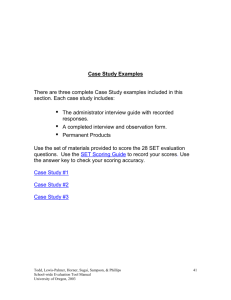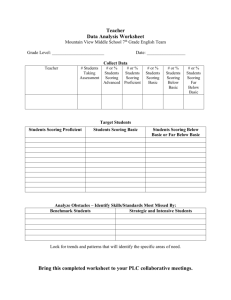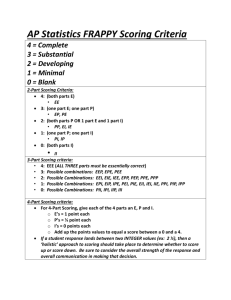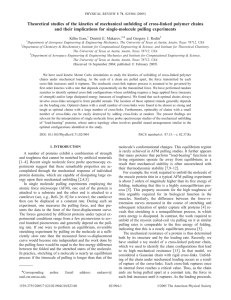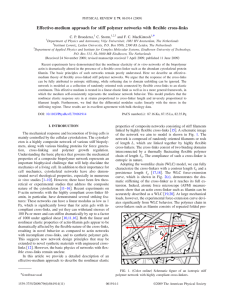Acadian_1_230_Scored-Concept-Mapping-Workshop-version
advertisement
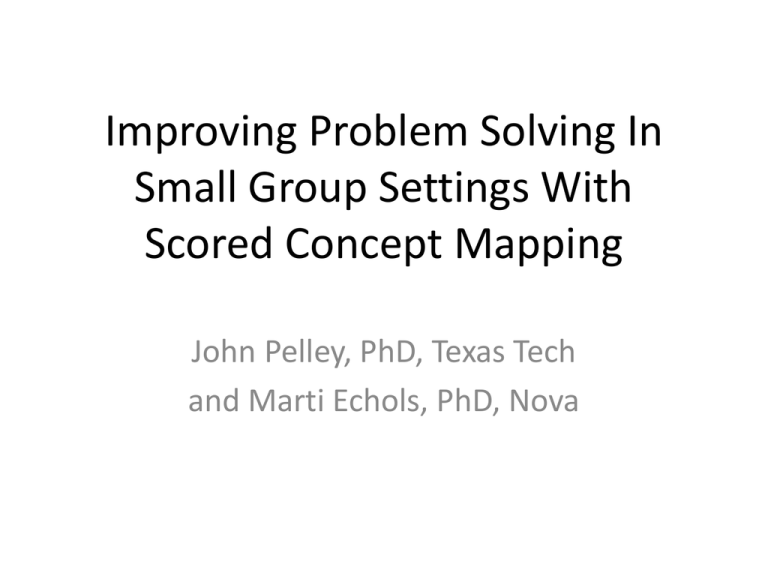
Improving Problem Solving In Small Group Settings With Scored Concept Mapping John Pelley, PhD, Texas Tech and Marti Echols, PhD, Nova Overview • Why? – Why not leave the students to their own way of preparing? – Why is it important to focus on preparation? • How? – How does concept mapping correct for differences in learning style? – How does concept mapping change reading behavior? The Problem • Assumption that students know how to prepare for problem solving exercises. – TBL and other problem solving discussion settings require knowledge of fundamentals. – Students do not read and understand learning objectives the same way. – Students debate and defend answer choices based on what they understand. The Principle • “The test drives the behavior.” – Students do not study to understand, they study to perform. – Goal is to require understanding in order to perform. – Consider both the role of faculty written exams and board/licensing exams Experiential Learning Model Outside Concrete experience Can it be used? (Kol b, 1 984, p.2 1) Experience new information Testing implications of concepts in new situations Observations and reflections What is it? What does it mean? Formation of abstract concepts and generalizations Inside 5 The Learning Cycle Zull, 2002, The Art of Changing the Brain 6 Can You Find The Sittin’ And Readin’ Dendritic Tree? Sittin’ and readin’ Complete learning cycle; plus 7.5hrs sleep (minimum) Control left, LTP sensitized right Tree of long-term potentiated cells markedly increased (hippocampus “rehearsal”). Dendritic trees = “processing power.” 7 Back To The Future • Temporal (back) processing looks at – Facts, grouping, memorized patterns – From lectures, books, other resources • Frontal (future) processing looks at – “Discovered” patterns, inferences, evaluation of options – From dialog during TBL/PBL 8 What’s Your Favorite Lobe? • What information do you give the most attention to? Specifics, routine procedure The big picture, relationships, predictions Everyone does both, but only one is preferred. 9 What’s Your Favorite Lobe? • What information do you give the most attention to? • Sensing types (MBTI) Specifics, routine procedure Temporal lobes emphasized • Intuitive types (MBTI) The big picture, relationships, predictions Pre-frontal lobes emphasized 10 How Do Students Learn Differently? • Focus on Myers-Briggs Sensing and Intuitive types • Type preferences only indicate a comfort zone for learning • Type is not a limitation • Both ways of learning can be developed Adapting Learning Based Upon MBTI • Sensing types note every detail and see how details relate to each other • Intuitives can develop this skill • Intuitives look at the structure and hypothesize about outcome if the structure changed • Sensing types can develop this skill Test Taking Style • S style – Seek answer that matches memorized knowledge – Re-read question to stimulate recall – Memorization learning requires recognition • N style – Rule out answer choices – Don’t fit pattern – Big picture learning establishes patterns 13 Concept Maps • Background on Concept Maps • Developed from the work of cognitive psychologist, David Ausubel • Believed “learning takes place by assimilating new concepts & propositions into the existing framework of the learner” • Why “hands-on” learning is impt in science Background (con’t) • Very different from rote learning…must: – Be clear & use examples; must have prior knowledge and want to learn meaningfully • Work in evaluation using concept maps is Novak (2000) and clinical interview (Edwards & Frase , 1983) • Memory is not a vessel to be filled but a complex of interrelated memory systems Benefits of a Concept Map • Tie new information to old knowledge • Think about relationships of facts and concepts • Categorize ideas • Clarify thoughts • S & N both benefit • Produces long-term memory (Novak, 1990) Scoring a Concept Map • Basics of higher order learning • Link = 1 point; acquire facts, form node • Branch Point = 5 points; Analysis & Application or discover and document, nodes with 2 or more links • Cross Link = 10 points; between branches, converge common nodes, develop patterns • Higher scoring parts of the map drive lower scoring • Type A personality wants the highest points Anatomy Of A Concept Map • Key terms enclosed in “bubbles” • Fact = two connected bubbles • Connections can contain verbs – describes concept relationship • Branch points represent groupings and organization • Cross-links are comparisons and cause-andeffect • integrative thinking 18 From SuccessTypes Prematriculation Program www.ttuhsc.edu/SOM/success 19 Top-Down vs. Center-Out Risk Factors For Breast Cancer 20 Top-Down vs. Center-Out Risk Factors For Breast Cancer Main Idea 21 Using Concept Maps • • • • • • Concepts Maps “bridge the gap” Develop higher order thinking skills “S” learns how to categorize, relate “N” learns facts to support relationships “E” can think out loud “I” can prepare in advance for meaningful participation How Does Concept Mapping Affect Learning Styles • Sensing types can learn intuitive type skills – Discovery of patterns; relationships – Improved “ruling-out thinking” • Intuitive types can learn sensing type skills – Recall of facts not in big picture – Improved time on task • Helps change the brain for Ss and Ns Steps to Constructing a Concept Map • Faculty prepare key words from article or lecture • Give to groups to review & determine how they relate • Examine for relationships • Draw arrows between words which relate • Linking words above the arrows Overview of Mapping List – Group – Compare 1. List important terms 2. Group by major topic 3. Compare by drawing cross-links 25 How to Concept Map 1. List or highlight the major concepts from notes or text. – Try a regular outline if more comfortable 2. Identify the most general concepts (grouping). 3. Arrange with most general concepts at the top – – Label connecting lines to explain the relationship, if needed. Arrowheads can show direction, cause-and-effect, etc. 26 How to Concept Map 4. Try to branch out at each level of the hierarchy with more than one link. – Reading becomes more normal now 5. Identify and draw cross-links between related concepts. – This is a powerful step in developing integrative thinking. 6. Alternative patterns: A “spider” or cluster pattern can be constructed from the center outward, but this will not be seen as readily by linear learners. 27 Scored Concept Mapping • “The test drives the behavior” • What can be scored? – Individual facts (any two nodes connected) – Levels of hierarchy (branch points) – Cross-links • Scores can be weighted to emphasize integrative thinking. Concept Mapping – Assessment • Scoring system – What do we value? – Recall – individual facts • 2 points per valid link – Analysis – grouping of related items • 5 points per group (level of hierarchy) – Comparison – relationships between groups • 10 points per cross-link Exercise 1 • Read handout passage for Exercise 1 (5 min) • Make a list of all information that can be recalled. – This exercise resembles a typical student preparation for a TBL session. – Subsequently compared with construction of a concept map for the same reading assignment. Exercise 1 Continued • Brief clarification of directions for constructing a map • Construct your own maps for the same reading assignment (10 min). • Brief discussion period to explore initial reactions to reading vs. concept mapping. Exercise 2 • Read handout passage for Exercise 2 and construct a concept map (10 min) • Exchange maps with a neighbor for scoring. • When scoring has been completed neighbors discuss their maps and the scoring with each other (5-10 minutes) Tally sheet: Use tick marks (////) to count Facts (links): Groups: Cross-links: Discussion: Effect Of Scoring On Reading May Our Cross Path Again As We Walk Through the Journey of Life Thanks for Spending Your Time Learning With Us Drs. John Pelley & Marti Echols



